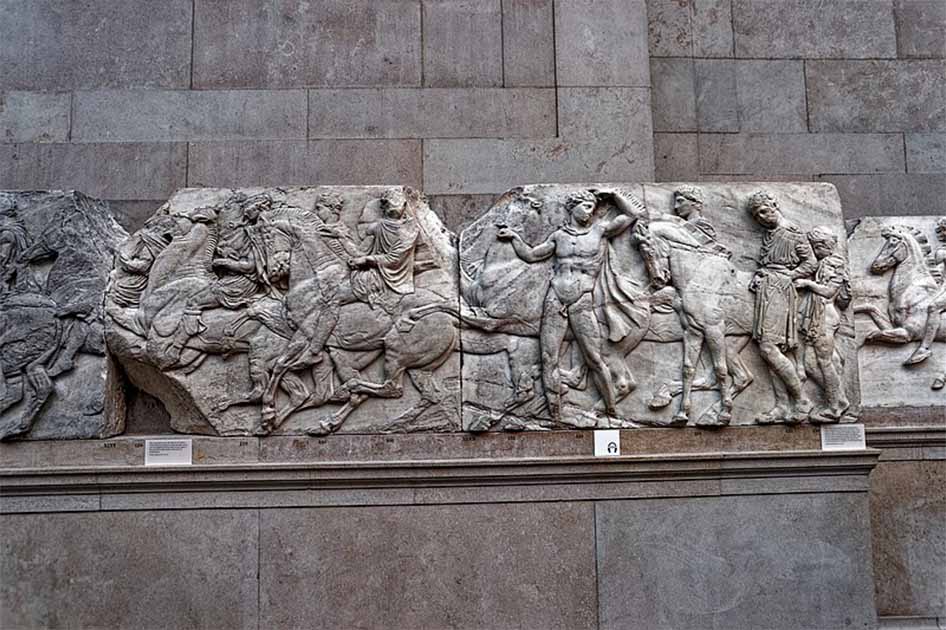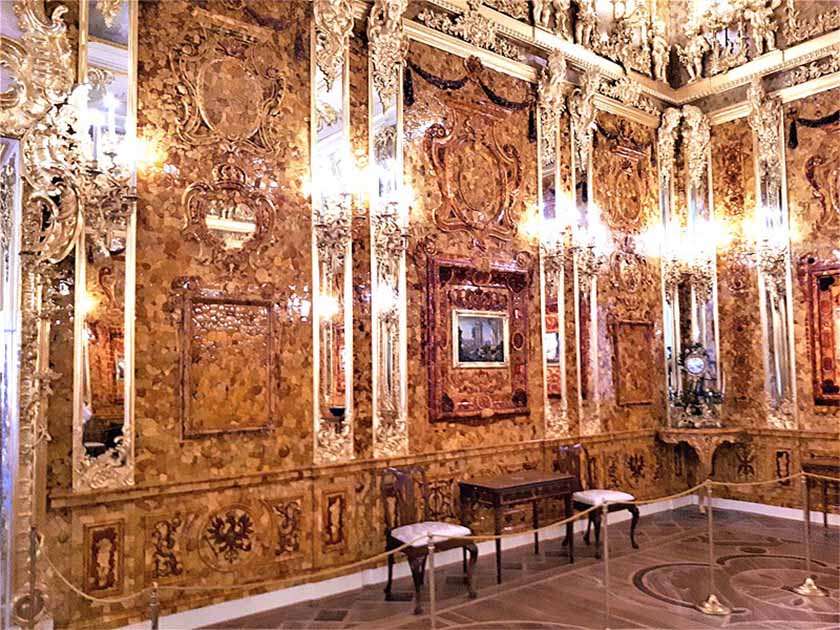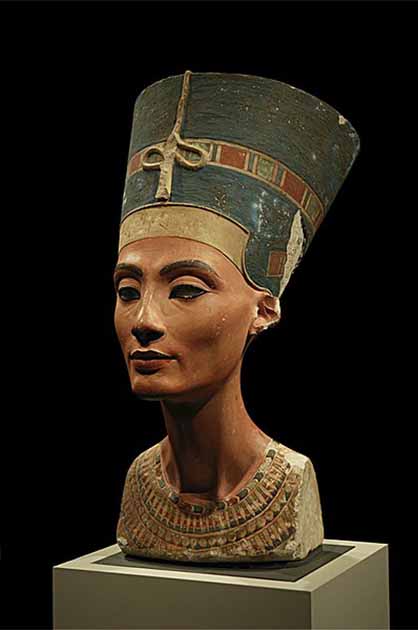Looted Legacies: 7 Famous Artifacts that are Totally Stolen
As young children most of us are taught two vital lessons. The first is don’t take what doesn’t belong to you. The second is the importance of sharing.
Unfortunately, not everyone is taught such lessons or just chooses to ignore them. Throughout history, countless priceless artifacts have been stolen. Some of them have never been recovered while others have ended up in the hands of foreign museums who stubbornly refuse to return them.
Here we have seven of the most tragic artifact thefts in history and reveal, where we can, who stole them.
1. The Rosetta Stone: Stolen by the French, Then the British
For anyone interested in Ancient Egyptian history, the Rosetta Stone is one of the most important artifacts ever discovered. It played a key role in deciphering Egyptian hieroglyphics from pretty pictures to a written language we can actually understand.
It was rediscovered by French soldiers during Napoleon Bonaparte’s military campaign in Egypt. The stone, measuring about 45 inches (114 cm) in height and 28.5 inches (72 cm) in width, is inscribed with a decree issued by King Ptolemy V in 196 BC.

The decree is written in three scripts: hieroglyphic, demotic (a cursive script used in ancient Egypt), and ancient Greek. Because the Greek text could be understood at the time of its discovery, scholars were able to use it as a key to decipher the previously undecipherable hieroglyphs. The Rosetta Stone provided a vital breakthrough in understanding the ancient Egyptian language and culture.
In a case of finder’s keepers, the French took the stone from its home and brought it to France. After Napoleon was defeated, the English decided they quite liked the look of the stone and under the terms of the 1801 Treaty of Alexandria, it was surrendered to the Brits.
Surprising no one remotely interested in important historical artifacts, the stone has sat in the British Museum ever since. Its theft from Egypt is at the center of an ongoing debate, with some people calling for its repatriation to Egypt. The British Museum disagrees, saying the Rosetta Stone is a global cultural treasure and that it is best preserved and studied in its current location, accessible to the public for educational purposes.
2. The Elgin Marbles: “Saved” by Lord Elgin
The Elgin Marbles, also known as the Parthenon Marbles, are a beautiful collection of Greek marble states that once decorated the Parthenon temple on the Acropolis in Athens. It’s thought the Elgin Marbles sat there for around 2,500 years until Thomas Bruce, the 7th Earl of Elgin turned up between 1801 and 1805.
Lord Elgin was the British ambassador to the Ottoman Empire and had asked the Ottoman authorities, who controlled Athens back then, to remove the sculptures. His motives are still up for debate.
The official story is that he was trying to rescue the sculptures from neglect, damage, and potential destruction. He believed that he was preserving them for posterity and for the benefit of culture. To be fair, the Ottomans didn’t have the best track record when it came to looking after ancient Greek sites or artifacts.
Others are less forgiving and believe that Lord Elgin just wanted to add the sculptures to England’s already impressive collection of important historical artifacts. Either way, after their removal, the Elgin Marbles were transported to Britain and eventually came under the ownership of the British Museum in London, where they are still housed today. However, their acquisition has been a matter of controversy, with Greece consistently advocating for their return to their place of origin.

The Greek government and its supporters say that the Elgin Marbles should be reunited with the remaining Parthenon sculptures in Athens, as they are considered an integral part of Greece’s cultural heritage. Their removal was an act of cultural appropriation, and they should be returned home.
The British Museum’s defense is eerily similar to that of the Rosetta Stone, it maintains that the Elgin Marbles were acquired legally and that they provide a valuable educational resource to a global audience in London. The museum argues that the sculptures are best preserved and displayed in a museum setting, where they can be appreciated alongside other ancient world treasures.
- In Pictures: Ten “Out of Place” Artifacts
- Why was King Tutankhamun Buried with Two Babies?
Even if the statutes were originally obtained legally, this still feels a lot like theft. The idea that the statues are better cared for in England than in Greece sounds more than a little condescending. The debate is still raging and raises important questions about cultural heritage, ownership, and the responsibilities of museums in a global context.
3. The Amber Room: Culprit Unknown
Here’s one not stolen by the British (probably). The Amber Room was a legendary chamber loathed in the Catherine Palace of Tsarskoye Selo near St. Petersburg, Russia. It was famed for its opulence and stunning panels made entirely of amber, gold leaf, and mirrors. One of the most beautiful rooms ever crafted by human hands.
In 1941, as World War II raged on, the German army invaded the Soviet Union and made its way to the Catherine Palace. The decision was made, considering Germany’s sticky fingers throughout the war, to dismantle the Amber Room to stop it from being looted or damaged.
Unfortunately, the clock was ticking, which meant the disassembly was hurried and chaotic, the Germans were closing in. After being dismantled, the Amber Room was transported to Königsberg Castle in present-day Kaliningrad, Russia, where it was reassembled and put on display. So far, so good.
Sadly, as the war progressed the Germans stepped up their bombing campaigns and in 1945 Königsberg was heavily bombed. What happened to the Amber Room? Nobody knows.

There are numerous theories. The simplest is that the room was destroyed in the bombings. But if that were true surely there would have been some trace left behind?
Many people believe the room was once again dismantled and secretly moved to be hidden away from the Germans. Perhaps whoever hid it then decided to keep it. Or maybe the Germans discovered its hiding location and some greedy Nazi decided to keep it for himself.
Over the years, multiple searches and investigations have been conducted to find the Amber Room, but none have been successful. Despite the efforts, the whereabouts of the Amber Room is still unknown, and it is considered one of the greatest unsolved art mysteries in history.
4. The Iraqi National Museum Thefts: Countless Treasures Lost
Established in 1926, the Iraqi National Museum housed an extensive collection of important artifacts that represented the region’s rich cultural heritage spanning thousands of years. That was until it was looted following the U.S.-led invasion of Iraq in 2003.
Toppling a dictator tends to be a little chaotic, and following the fall of Saddam Hussein looters used that chaos to target the National Museum. No one was guarding the museum and over several days and nights looters raided the museum and countless irreplaceable artifacts were stolen or destroyed.
The looted items included ancient sculptures, jewelry, pottery, manuscripts, and other archaeological treasures from various civilizations, such as the Mesopotamian, Sumerian, Babylonian, and Assyrian cultures. It was a devastating loss for Iraq and the global cultural community, as many of these artifacts provided insights into the origins of civilization and the history of human development.
Quite rightly, the looting sparked outrage worldwide and raised important questions as to who was to blame. It was felt that the U.S. and its allies should have done more to protect and preserve the museum.
Efforts have been made to recover the stolen artifacts. Interpol, with the aid of various governments and their law enforcement agencies, and art organizations has scoured the globe, tracking down and repatriating looted items. Many of the stolen artifacts were discovered in international markets, seized at borders, or intercepted during attempted sales.
But there’s a long way to go. A substantial number of artifacts are either still missing or were irreparably damaged. The looting of the Iraqi National Museum served as an important reminder of the devastating consequences that armed conflicts can have on cultural heritage and the urgent need to protect and preserve our shared human history.
5. The Nefertiti Bust: “Looked After” by Germany
The Nefertiti bust is perhaps one of the most iconic artifacts to have come out of Egypt, which is saying something. Believed to date back to the 14th Century BC, it’s a limestone sculpture depicting the head and shoulders of Queen Nefertiti, the wife of Pharaoh Akhenaten, and one of Ancient Egypt’s most famous rulers.

The bust was discovered in 1912 by a German archaeological team led by Ludwig Borchardt at the ancient city of Amarna in Egypt. It was found in the workshop of the sculptor Thutmose, who is believed to have created the piece during the reign of Akhenaten. The bust is estimated to have been made around 1345 BC.
Following its discovery, the Nefertiti Bust became an object of fascination and admiration worldwide. It is regarded as one of the most remarkable and important works of art from ancient Egypt. Its preservation in such remarkable condition, despite its age, has made it an invaluable source for understanding ancient Egyptian art and culture.
- Eight Artifacts Which Carry a Curse
- (In Pics) Ten Stolen Works of Art that have Never Been Recovered
It’s so impressive in fact, that the Germans decided to keep it. Much like the other artifacts on this list, this has led to a long, ongoing ownership debate. Egypt has been trying to get the bust back for years, arguing that its removal was unlawful. The Neues Museum in Berlin, backed up by the German government, maintains that its acquisition was legal and that the bust is better off there.
6. The Crown Jewels of Ireland: A National Embarrassment
The Crown Jewels of Ireland, along with the Grand Collar of the Order of St. Patrick were used in the coronation ceremonies of various monarchs and had been worn during official state functions for centuries.
Then, in 1907, they were stolen from Dublin Castle, the seat of the British administration in Ireland at the time. The jewels were kept in a strongroom within the Bedford Tower, and access to the room was strictly controlled. However, on the night of July 6, 1907, it was discovered that the jewels were missing.
The investigation into the theft was led by the Dublin Metropolitan Police but despite their best efforts, they came up short. Neither the culprits nor the jewels were ever found. The whole incident was a major scandal for the British.
It’s safe to say the British administration in Ireland hasn’t always been particularly popular and the incident raised serious questions about the security and integrity of the administration. The Crown Jewels of Ireland held immense historical and symbolic significance.
They were considered the symbols of Ireland’s ancient monarchy and its ties to the Order of St. Patrick, a chivalric order established in 1783. The loss of these precious artifacts was a blow to Irish national pride and heritage (as was having the British ruling over them in the first place some might argue).
There are various theories and speculations as to what happened. Some suggest the Crown Jewels were disassembled and sold off individually to draw less attention. Others propose they were sneaked out of the country and ended up in the hands of a private collector.

To this day there is the occasional rumor or claim of a sighting, but they never amount to much. The theft of the Irish Crown Jewels remains an unsolved mystery and a source of intrigue in Irish history. Efforts to recover the stolen artifacts have continued over the years but with no success.
7. Mayan Jade Mask: An Armed Raid
In 1985 a Mayan Jade Mask dating back to the 7th century AD was stolen from the National Museum of Archaeology and Ethnology in Guatemala City. The mask was part of a larger collection of Mayan artifacts and was one of the Museum’s prized possessions, holding immense cultural and historical value.
Unfortunately, it also held considerable monetary value and on September 25, 1985, a group of armed men stormed the museum and in a brazen daylight heist stole the jade mask as well as several other precious artifacts. Using their weapons, the thieves overwhelmed the museum’s modest security and within minutes had made off with several items.
The theft garnered international attention. The mask’s theft was particularly devastating as it represented a unique and irreplaceable piece of Mayan heritage. The mask, crafted from intricately carved jade, was not only an artistic masterpiece but also held great significance in Mayan religious and cultural practices.
Sadly, despite the best efforts of law enforcement agencies from around the world, none of the stolen items have ever been recovered. It’s believed the objects fell into the hands of private collectors and the theft serves as a reminder of the ongoing challenges surrounding the illicit trade and trafficking of cultural artifacts.
Stolen Treasure
The thefts on this list tend to fall into two categories. The first is artifacts taken from their native lands in acts of what some people describe as cultural appropriation and others call cultural preservation. Whether these are true “thefts” depends on which side of that argument you fall on.
The second category is arguably even worse. Precious artifacts that were stolen and then likely sold, falling into the hands of greedy private collectors. Tragically, many of these objects will never be recovered and are doomed to only ever be shared with a very privileged few.
The debate as to where these artifacts belong is likely to keep raging on. But who is to say who these artifacts truly belong to? They are an important part of our shared cultural heritage. As such it could be argued they should be as widely shared as possible, not squirreled away in dusty back rooms, or used as tools for political point scoring.
Related Post
The entire tomb is filled with signs and symbols that mention Queen Nefertiti and after some time passed and linguistic experts managed to decipher the stories told here, the team was baffled.
The mystery of the Solar Temple of Abu Gurab and its “Star Gate” comes to light
Thuya, the mother of Queen Tiye, left a monumental legacy by becoming the grandmother of Akhenaten and Tutankhamun.
The oldest traditions lead us to believe that blacks were the first inhabitants of Mexico.
The REAL face of King Tut: The pharaoh had feminine hips, clubfoot, and protruding teeth according to the ‘virtual autopsy,’ which also revealed that his parents were brother and sister.
The “oldest gold of humanity” was found in the Varna necropolis, on the Bulgarian Black Sea coast